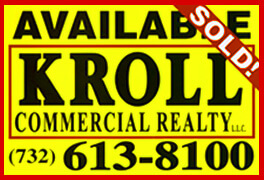
CAP Rates Explained
When examining a commercial property for suitability in your investment portfolio, the term capitalization, or CAP rate, is frequently used. It can be thought of as a rate of return on investment, much as bonds have rates of return. But just what is it telling us and why is it so important to understand if you are considering buying a commercial property as an investment?
At its most basic definition, the CAP rate is the rate of return an investor would receive on an all cash purchase. It allows us to compare properties, to spot trends in market values, and to measure levels of risk to investments. To understand these concepts better, let’s look at the formula used to calculate CAP rates, and what goes into each of the variables of the equation:
CAP Rate = annual net operating income (NOI)
Cost (assuming all cash)
For example, if we had a building that threw off an NOI of $100,000 and cost was $1,000,000, then we have a CAP rate of $100,000 $1,000,000 or 10%.
From this formula we can see that CAP rates have two types of relationships:
Direct – as NOI goes up or down, the CAP rate goes up or down with it.
Inverse – as the Cost goes up or down, the CAP rate goes in the opposite direction.
Let’s define NOI more closely. NOI is the gross operating income of a property less the operating expenses.
- Gross operating income is the sum of all potential income less an allowance for vacancies and credit losses
- all potential income means the property is fully rented and all rents are collected. We also add income from parking fees, services charges, vending machines, laundry machines, etc.
- allowance for vacancies and credit losses is the lost income from when rent isn’t being paid (meaning the unit is empty or the tenant just isn’t paying their rent). We need to know what this percentage is now and what it has been historically.
- Operating expenses include: property maintenance and management fees, insurance, utilities, property taxes, janitorial fees, and repairs. (Note that income taxes and interest expenses are not included just as Cost in the NOI formula does not include debt. This makes the calculation comparatively the same for any buyer).
As we can see, CAP rate formulas compare actual income and expenses versus the cost or selling price of a property. This gives us a tool, a percentage, with which to rank the return on one’s investment. Here are some important points to remember about CAP rates and what they are really telling us:
- This is only a snapshot based on one year’s worth of NOI. It is valuable to look at trends in CAP rates over time. CAP rates, over time, will reflect trends in interest rates, diversity of tenants, lengths of leases with renewals, credit worthiness of tenants, condition of the property and location. These are all risks that will affect the CAP rate, and in return, the price of the property.
- This formula does not take into account any debt service. It puts properties on a more level playing field. It is equally important to look at your cash-on-cash return, which is calculated by dividing NOI less any debt service by the total amount of cash invested.
- CAP rates must be compared to rates of returns from other safer investments. If someone can earn 4% on a safe investment such as a US Treasury bond, it would be expected that they would be looking for something to justify the additional level of risk over that 4% return.
- CAP rates are at their most value when they are used to compare similar properties. That means they are in a similar location, of the same asset type, and are being valued at the same point in time.
- Remember – the CAP rate in an inverse relationship to selling price. For a riskier investment a higher rate of return will be expected. The higher the return, the lower the selling price. The opposite is true also. The less risk, the higher you can expect the selling price to be.
